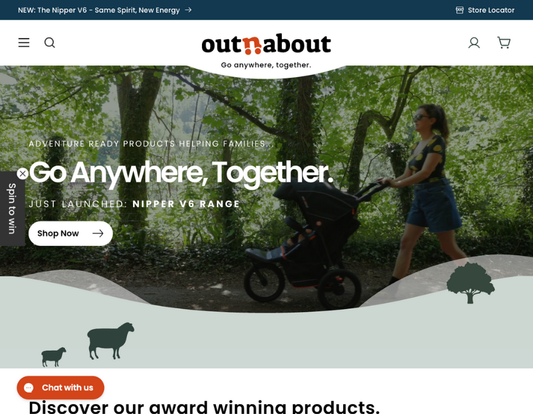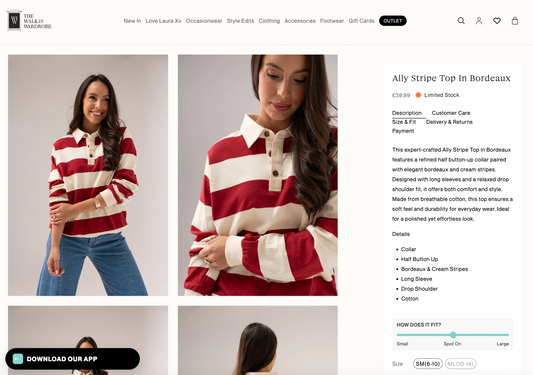Here at Glaze, we love Klaviyo. It's one of the most powerful tools for email marketing, allowing businesses to create highly personalised, automated, and data-driven email campaigns.
However, even with such a powerful tool at your disposal, things can quickly become chaotic if you don’t have a structured plan in place.
In this article, we’ll explore why a well-structured email marketing calendar is essential for success and share best practices to help you organise and plan your Klaviyo campaigns.
So, let's get started:
Why a Klaviyo Campaign Calendar Matters
At first glance, creating an email marketing calendar may seem overly rigid or even unnecessary. However, the benefits of having a structured email schedule, even for the next 2 to 4 weeks, are immense.
Let’s take a look at why having a well-organised campaign calendar is essential for success in email marketing:
1. Stay Organised and Avoid Last-Minute Rushes
By planning your campaigns in advance, you can avoid the frantic scramble to put together an email at the last minute. Planning ensures that you have enough time to create high-quality content, design engaging email templates, and test everything properly before hitting send.
Example: If you're planning a holiday sale, it’s much better to have your emails ready ahead of time rather than rushing to create a promotional email the day before the sale starts. A planned schedule allows for more careful thought and strategic execution.

2. Maintain Consistent Communication with Your Audience
Consistency is key when it comes to email marketing. A well-planned campaign calendar helps ensure you’re nurturing your relationship with your customers without overwhelming them.
Example: If you’re running a campaign focused on educating customers about a new product, you might send weekly educational emails leading up to the product launch. This consistent communication builds anticipation and trust over time.
Or, as another example, see this reminder campaign email sent by our client Niall Conlon in regards to one of his events:

3. Align Emails with Key Events and Promotions
An email marketing calendar helps you align your email campaigns with key business milestones, holidays, and promotions. Whether it’s a product launch, an industry event, or a seasonal sale, having a calendar ensures that your emails are timely and relevant.
Example: If your company benefits from key gifting days such as Valentine's Day, preparing romantic-themed emails prior to the big day can make your campaign feel more authentic and timely.

4. Balance Promotional and Non-Promotional Content
Sending only promotional emails can lead to unsubscribes and disengagement. A good campaign calendar helps you strike the right balance between promotional content, newsletters, educational emails, and other types of communication.
Example: In one month, you could send one promotional email, one educational email on how to use your products, and a newsletter with company updates. This balance keeps your audience engaged without feeling overwhelmed.

5. Avoid Over-sending and Missed Opportunities
Having a campaign calendar allows you to avoid sending too many emails too close together or, conversely, missing important opportunities to connect with your customers.
Example: You don’t want to bombard your subscribers with multiple emails within one day, but you also don’t want to neglect sending an email that coincides with an important event like a flash sale or product restock.
Best Practices for Creating a Klaviyo Campaign Calendar
Creating an effective email marketing calendar for your Klaviyo campaigns requires careful planning. Here are some best practices to follow as you begin building your calendar.
1. Define Your Goals and Objectives
Before you even think about scheduling your emails, it’s important to define your goals. What are you trying to achieve with your email campaigns? Your goal will dictate the type of emails you send and when you send them.
Example: If you want to drive traffic to a new product page, your email campaign will likely focus on product announcements, user reviews, and promotional offers.

2. Identify Key Dates and Events
Your email campaign calendar should be aligned with key dates and events that matter to your business. These could be seasonal sales, product launches, special events, or even industry observances.
Here are some examples of key dates to include in your calendar:
- Product Launches: Schedule emails in advance to announce the release of new products or services.
- Seasonal Sales: Black Friday, Cyber Monday, Summer Sales, or holiday-specific campaigns like Christmas and Valentine’s Day.
- Industry Events or Awareness Days: Earth Day, National Women’s Day, or any other event that aligns with your brand.
- Anniversaries or Customer Appreciation: Celebrate your company’s anniversary or express gratitude to customers with special promotions or messages.
Aligning your emails with these key events helps ensure that your campaigns are timely, relevant, and impactful.
If you're in need of some inspiration, check out our marketing calendar for 2025:
3. Set Up a Balanced Email Schedule
It’s important to find a balance between too many emails and too few. The ideal frequency depends on your goals, audience, and type of business, but here are some general guidelines:
- Promotional Emails: Aim for no more than one per week, unless you’re running a major sale or promotion. Too many promotional emails can lead to email fatigue.
- Newsletters or Content-Driven Emails: Depending on your industry and audience, bi-weekly or monthly newsletters are often sufficient to keep your audience informed and engaged.
- Event-Based Emails: These should be scheduled around key dates and can be sent a few days before the event to build anticipation.
Example: If you’re running a limited-time offer, you might send an email announcing the sale, followed by a reminder email the day before it ends. But be careful not to bombard customers with too many emails in a short period.

4. Use Klaviyo’s Segmentation Features
Klaviyo’s segmentation tools are incredibly powerful and can help you send more personalised, relevant emails to your subscribers. Instead of sending the same generic email to your entire list, you might think to create targeted campaigns based on customer behaviour, demographics, and past purchases, such as:
- VIPs: These top customers buy often, spend big, and stay engaged. Keep their loyalty with VIP perks, early access, and exclusive experiences.

- Loyal subscribers: These frequent buyers are loyal but spend less than VIPs. You can encourage bigger purchases with bundled deals, upsells, or volume discounts.
- New Subscribers: Send a welcome series of emails to new subscribers to help them get acquainted with your brand.
- Unengaged Subscribers: If you have subscribers who haven’t engaged with your emails in a while, you can set up a re-engagement campaign to bring them back into the fold.
Using segmentation helps improve open rates, click-through rates, and overall engagement, which makes your campaigns more effective.
Find more inspiration on how to segment your subscribers here.
5. Test and Optimise
Your email calendar shouldn’t be set in stone. It’s important to regularly analyse the performance of your campaigns and make adjustments as needed. Key metrics to track include:
- Open Rates: Do people open your emails? Are your subject lines engaging enough?
- Click-Through Rates: Are subscribers clicking on the links in your emails? If not, consider tweaking your calls to action or content.
- Conversion Rates: Are your emails leading to sales or desired actions? If not, review your content and strategy.
- Unsubscribe Rates: Are people unsubscribing from your emails? Too many unsubscribes can indicate you’re emailing too frequently or sending irrelevant content.

Use A/B testing to experiment with subject lines, email designs, and sending times. Regularly tweaking your approach will help optimise your calendar over time.
7. Use a Visual Planning Tool
A visual representation of your campaign schedule makes it easier to stay on track. You can use tools like:
- Klaviyo’s Built-In Campaign Planner: Klaviyo offers a simple way to schedule and plan your emails directly in the platform.

- Google Calendar or Outlook: These tools allow you to see your emails and events in a visual format.

- Notion or Trello: These task management tools can help you organise your content and campaign plans.

- Google Sheets or Excel: A simple spreadsheet can offer a clear overview of your campaign schedule.
Having a visual plan makes it easier to spot gaps, overlaps, or opportunities for improvement in your email calendar.
Final Thoughts
Building an email marketing calendar for your Klaviyo campaigns is an essential step toward creating a more organised, efficient, and effective marketing strategy. By following best practices, setting clear goals, leveraging automation, and analysing performance, you can ensure your email campaigns drive results without overwhelming your subscribers.
If you're looking for expert help in optimising your Klaviyo flows or building high-converting email marketing campaigns, Glaze Digital specialises in Shopify and Klaviyo. Reach out to us for personalised support to take your email marketing to the next level.
Want to avoid missing expert Shopify advice and tips in future? Sign up to our newsletter – Shopify Insider – today to get content like this sent straight to your inbox.





